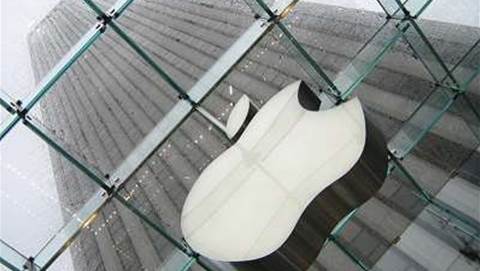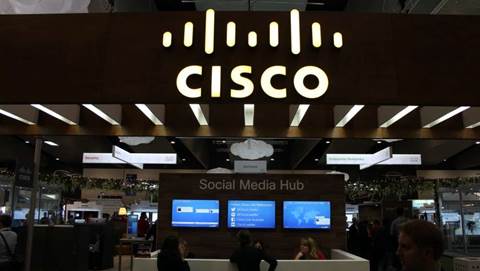The Turnbull government’s decision to ban Huawei equipment from Australian 5G networks has become part of the context behind Optus’ objections to the Telstra-TPG multi-operator carrier network (MOCN) deal.
Optus' complaint is made in four recently-published submissions to the ACCC’s ongoing inquiry into the deal, after the competition regulator last month sought input into what other options TPG might have, independent of Telstra.
The submissions in question come from CEO Kelly Bayer Rosmarin [pdf], director of spectrum strategy and management Steven Turner [pdf], COO enterprise and business and MD wholesale and strategy Benjamin White [pdf], and networks VP Kanagaratnam Lambotharan [pdf].
Optus’ contention is that because it had already deployed Huawei equipment into its 4G network at the time the ban came into force, and Telstra had not, that placed it at an ongoing competitive disadvantage that will be exacerbated if the Telstra-TPG deal proceeds.
Bayer Rosmarin’s submission states that “upgrading a site to 5G is more expensive and time-consuming for Optus than Telstra because existing 4G Huawei equipment in Optus sites needs to be replaced whereas Telstra did not use Huawei equipment."
“The Huawei decision gave Telstra a material first-mover advantage, and permanent cost advantage, on 5G that it has fully exploited.”
Optus’ submissions say TPG was similarly impacted by the Huawei ban.
However, if the MOCN deal goes ahead, TPG would get the chance to exit its Huawei network investments without having to replace the equipment, Optus said in its corporate submission [pdf]: “Through the proposed transaction, TPG will achieve a solution for the Huawei problem”.
Were TPG to cut a deal with Optus instead of Telstra, Optus' submission said, “those costs would be shared to some extent.”
Deployment plans
Lambotharam provides the greatest detail into the impact of the “Huawei ban”.
The 2018 Telecommunications Sector Security Reforms (TSSR), he wrote, “Introduced new measures such as … the ability for government to intervene and issue directions in cases where there are significant national security concerns that cannot be addressed through other means”, Lambotharam said in his submission.
“Whilst neither the security guidance nor the TSSR framework expressed that Huawei 5G RAN equipment would be banned, I understood from various discussions with employees of Optus that the announcement effectively was a ban on using Huawei equipment in 5G mobile networks”.
The ban blocked any 5G traffic from traversing Huawei equipment, Lambotharam said, including Huawei 4G network core kit that Optus had already deployed and intended to use in its early 5G rollout.
Lambotharam’s submission described the two deployment models available to Optus: one would be a standalone 5G network that didn’t interact with 4G equipment; the other non-standalone design would let Optus reuse already-deployed Huawei 4G core equipment to carry signalling and control messages for the 5G radio access network (RAN) equipment.
“The Huawei ban essentially meant that MNOs [mobile network operators] would not be allowed to operate a 5G mobile network in which transmissions using 5G mobile technology passed through Huawei RAN equipment at any stage," Lamotharam states.
"It was clear to me that Optus could not use any Huawei RAN equipment in its proposed 5G mobile network, including any Huawei 4G RAN equipment to which the network was connected while providing 5G mobile services."
“Irrespective of whether Optus network is a 5G 'standalone' or 'non-standalone' network, as a result of the Huawei ban, Optus would have to remove the Huawei 4G RAN equipment from the network and replace it with a equivalent equipment provided by a non-Huawei vendor.
“Further, Optus’ 4G and 5G networks both use the Huawei transmission equipment. This equipment will also have to be replaced.”
Core and edge distinct
Optus’ plan contradicts statements made by the government in 2018, when then acting home affairs minister Scott Morrison and communications minister Mitch Fifield issued a media release [pdf] claiming that 5G made the network core indivisible from the edge.
“Where previous mobile networks featured clear functional divisions between the core and
the edge, 5G is designed so that sensitive functions currently performed in the physically and logically separated core will gradually move closer to the edge of the network”, they said at the time.
“In that way, the distinction between the core and the edge will disappear over time.”
This, the government of the day asserted, meant edge equipment could be exploited to compromise network security.
When the Parliamentary Joint Committee on Intelligence and Security sought submissions on the TSSR, Huawei had contended that the core-edge distinction would remain.
Its submission [pdf] said: “The Turnbull government relied on the wrong network architecture and technology advice to ban Huawei (and other Chinese vendors) from 5G”.
The government’s security advice, Huawei said, “inaccurately declared that core and non-core [RAN] parts of new 5G networks could not be separated.
"The split can be clearly demonstrated in 5G networks around the world where Huawei supplies the RAN but another vendor supplies the core.”


.jpg&h=140&w=231&c=1&s=0)


.png&h=140&w=231&c=1&s=0)





















